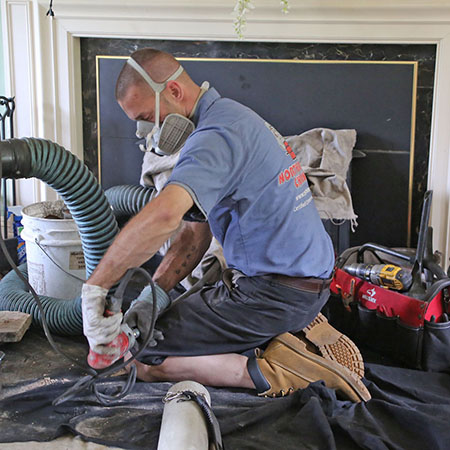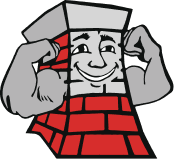The Ultimate Guide to Maintain Your Wood-Burning Fireplace
 It’s that time of year when we look forward to sitting next to a roaring fire watching Christmas films or catching up on the latest binge-worthy TV shows. Your warm memories could go up in flames if you aren’t cautious. A wood-burning fireplace can quickly become a safety risk if it isn’t regularly maintained.
It’s that time of year when we look forward to sitting next to a roaring fire watching Christmas films or catching up on the latest binge-worthy TV shows. Your warm memories could go up in flames if you aren’t cautious. A wood-burning fireplace can quickly become a safety risk if it isn’t regularly maintained.
Wood-burning fireplaces need to be taken care of to work safely. Using a fireplace that hasn’t been maintained increases the risk that you or a loved one could lose everything in a house fire or die from carbon monoxide poisoning. That is why we’ve put together the ultimate guide to wood-burning fireplace maintenance for you.
Fireplace Safety & Maintenance Guide:
• Clean old ashes out of the fireplace safely. Removing ashes can be dangerous since hot embers can keep burning long after the fire has gone out. The best rule of thumb is to wait at least 24 hours before removing ashes from the fireplace. Instead of tossing them outside or in the trash right away, move them to a fire resistant metal ash bucket. Place a lid on the bucket and let them sit for at least 3 days before disposing of them. You can leave up to 1 inch of ash in the fireplace but not anymore.
• Make sure that the chimney has a chimney cover or chase cover to prevent water, animals and lawn debris from getting into it and causing problems. Water can cause a wide range of damage from corroding the damper to making the brinks and mortar deteriorate. Animals and lawn debris can obstruct the chimney making it hard for smoke to escape and creating a fire hazard. A chimney cover is the best solution. It has mesh along the side that prevents critters, leaves, sticks and other lawn debris from getting into the chimney. Its metal top lets water or snow slide off onto the roof instead of falling down the chimney.
• Regularly check the damper to make sure it is working. The damper is a vent inside the chimney that has to be opened to let air in when a fire is roaring and closed to keep drafts out when the fire out. If the damper will not open, you should not use your fireplace until it is fixed or replaced. If it is stuck closed, carbon monoxide and smoke will have nowhere to go except for into your home.
• Only burn seasoned wood. Seasoned wood is lumber that was cut down and has dried out for at least six months. You should only burn seasoned wood because wood that is greener or damp won’t burn as well and will produce more creosote (a form of hardened smoke that collects in chimneys and is extremely flammable). You can tell if wood is still too green to burn if, when you hit it against another log, it only makes a dull thud sound instead of a sharp crack sound.
 • Have a chimney professional clean and inspect it at least once a year. Even when you burn seasoned wood, creosote can still build up in the chimney. If you let creosote deposits build up year after year, the chance of a fire increases. Hiring a chimney sweep at the end of every burning season to clean out creosote buildup is the best way to prevent this. During the cleaning process, a CSIA chimney sweep will also inspect the chimney. He will make sure the bricks and mortar, chimney lining, damper and other components are in good condition. You might think that you can tackle this on your own but what may look like a small problem to you could be an indicator of a bigger problem. CSIA-certified chimney technicians, or chimney sweeps, have the training to know the difference.
• Have a chimney professional clean and inspect it at least once a year. Even when you burn seasoned wood, creosote can still build up in the chimney. If you let creosote deposits build up year after year, the chance of a fire increases. Hiring a chimney sweep at the end of every burning season to clean out creosote buildup is the best way to prevent this. During the cleaning process, a CSIA chimney sweep will also inspect the chimney. He will make sure the bricks and mortar, chimney lining, damper and other components are in good condition. You might think that you can tackle this on your own but what may look like a small problem to you could be an indicator of a bigger problem. CSIA-certified chimney technicians, or chimney sweeps, have the training to know the difference.
Don’t run the risk! Keep your fireplace safe by following these 5 simple tips. If you need a chimney cleaning, give us a call! Find out for yourself why we are known for being the best chimney service provider in Central Connecticut.


